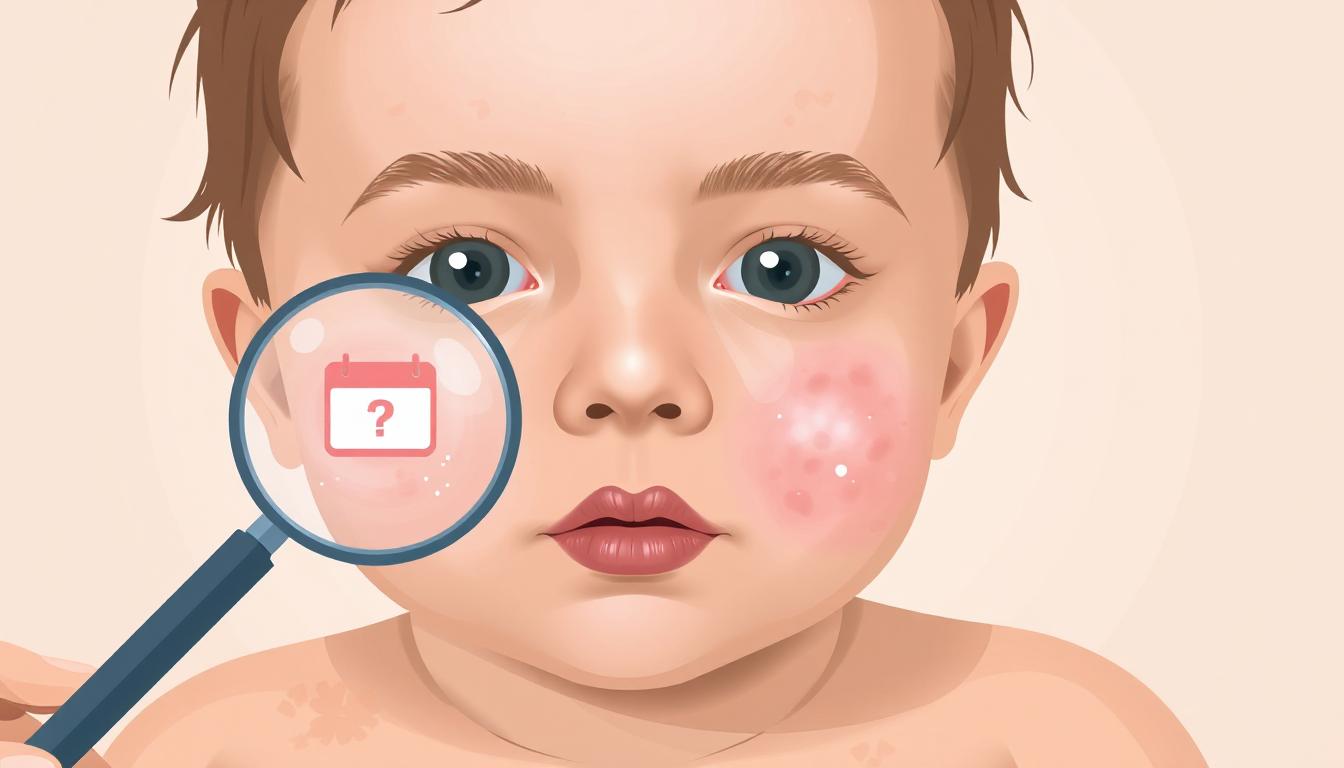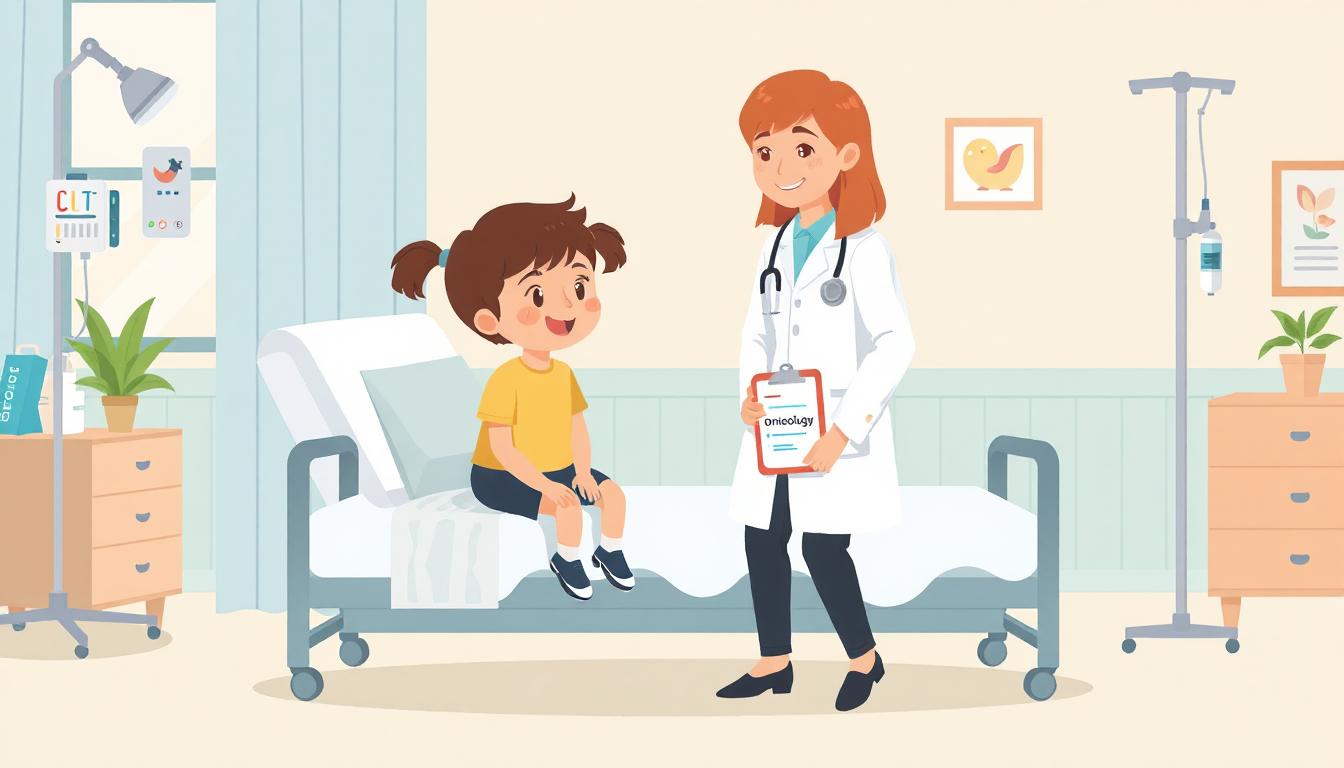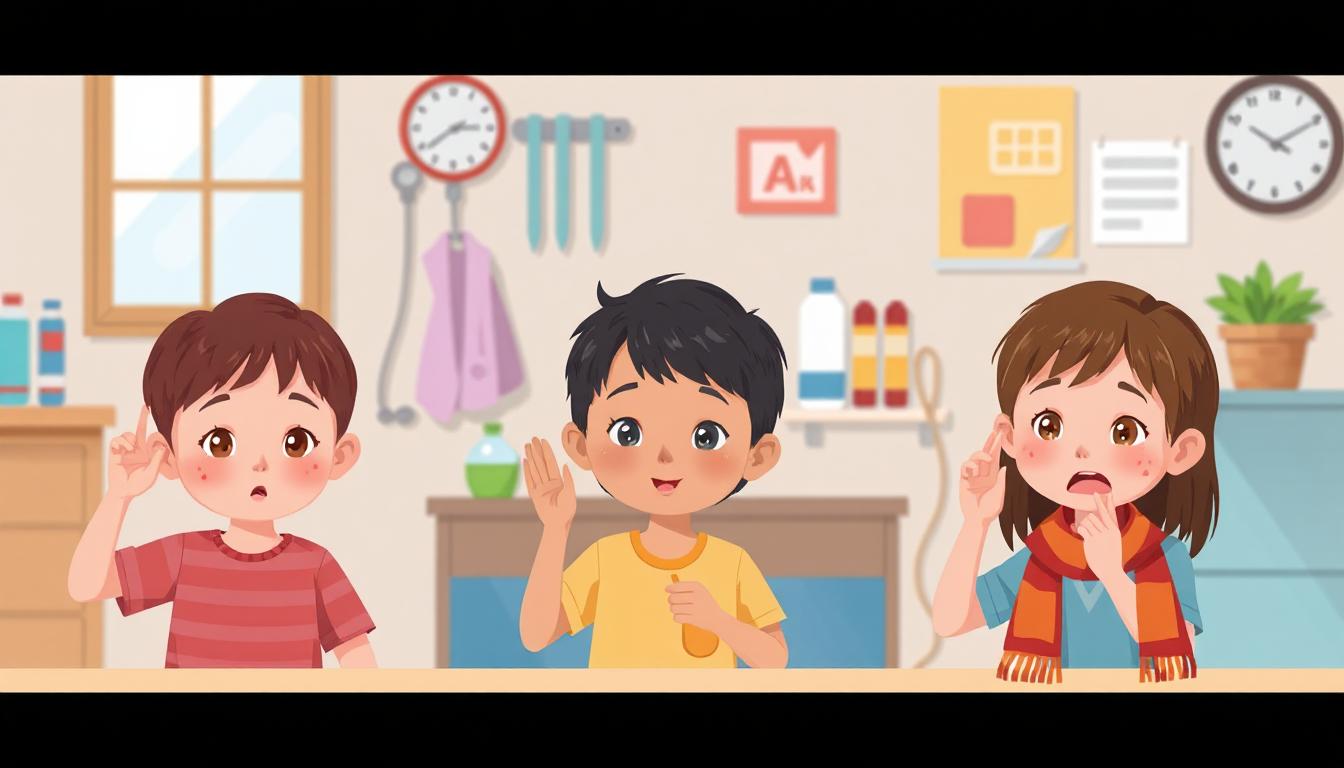Pediatric and Neonatal Care

Pediatric and Neonatal Care
Baby Acne
 Kade
Kade
Baby Acne Understanding What Baby Acne Is Baby acne is something a lot of new parents notice and worry about, but the truth is—it’s usually nothing serious. It looks like small red or white bumps on the baby’s cheeks or forehead, sometimes chin too. It might seem like pimples, but it's not the same as what teens or adults deal with. The cause isn’t dirt or allergy or even poor care. It’s mainly due to hormones—yep, the same hormones from mom that helped the baby grow during pregnancy. These can still linger after birth and can mess around with the baby’s tiny oil glands. That’s when the acne starts showing up. Some folks think it’s because of the baby products or milk reaction, but most times it just comes and goes on its own. No fancy baby acne treatment is needed in most cases. Just gentle care and patience go a long way. When and Why Baby Acne Develops Usually starts somewhere around 2 to 4 weeks after baby is born. It may catch you off guard one morning—you’re looking at your peaceful newborn and bam, little bumps pop up. It’s mostly the leftover maternal hormones doing this. These hormones overstimulate the baby's oil glands, which are still trying to figure out how to function properly. So when oil starts building up, those red bumps start showing up. But that’s not all. Things like heat, drool, milk on the face, or even the wrong kind of clothes or detergent can irritate the skin more. That’s why sometimes baby acne can seem worse after feeding or crying spells. Parents often notice stages of baby acne—mild at first, gets redder, then starts to fade. The good part is, it doesn’t hurt the baby, and they usually don’t even notice it’s there. Identifying the Signs and Symptoms It shows up mostly on the cheeks, nose, forehead—sometimes even chest or scalp. The bumps are tiny, red or white, and not painful. If it’s angry-looking, it can scare you, but baby stays calm, so that’s your hint it’s not serious. You’ve got to watch out for confusing it with other stuff like eczema or heat rash though. Eczema usually causes dry, patchy skin, sometimes itchy. Heat rash looks more like clusters of red dots in warm, sweaty places. With baby acne, there’s no flaking or itching, just tiny pimples. So when trying to figure out baby acne vs rash, look at the pattern, feel the texture, and check if baby seems bothered. Most times, they don’t even blink. Safe and Gentle Skincare for Affected Babies This is where you’ve got to be super careful. Don’t go overboard trying to wash or clean away the acne. Overdoing it actually makes things worse. Stick to warm water and a super soft cloth—no scrubbing. You can cleanse the face once a day, maybe twice if there’s milk residue or drool. But no soaps unless your doctor tells you. And definitely nothing scented or chemical-heavy. When drying the skin, pat, don’t rub. Air-drying works best when you’ve got the time. And about clothes—go for soft cotton ones. Keep it loose and breathable. Wash baby clothes with hypoallergenic detergent, unscented types. If you do want to try something, ask your pediatrician for a mild baby acne cream. But only if the acne is stubborn or lasts too long. Otherwise, most babies just need time. What Parents Should Avoid Doing This part’s big. A lot of well-meaning parents go wrong by trying adult methods on baby skin. That never ends well. Don’t use your face wash, acne gel, or anything with benzoyl peroxide. Sounds obvious, but in panic, people try things they shouldn’t. Baby skin’s not ready for that kind of stuff. Don’t scrub. Don’t pop. Don’t even keep touching the bumps too much. It’s tempting to try every trick under the sun, but most of those baby acne remedies online are not backed by doctors. Also—avoid slathering oils or lotions unless they’re doctor-approved. And definitely skip random home tricks unless they’re safe, like breast milk for baby acne (we’ll get to that in a sec). When to Seek Medical Advice Usually, baby acne clears up in a few weeks or max couple of months. But if things seem off, don’t hesitate to call your doctor. If the acne starts looking like it’s oozing pus, turns bright red, spreads fast to the body, or baby seems in pain—something else might be going on. Also, if it lingers beyond 3 months, it could be a more serious condition like infantile acne that needs treatment. If you’re not sure, it’s always okay to ask. That peace of mind helps you stay calm too. Pediatricians see this all the time. You’re not being overcautious—you’re just being a parent. Treatment Options and Natural Remedies In most cases, doctors will tell you to do nothing except gentle care. But if the acne’s bad or sticking around too long, they may suggest a mild baby acne treatment—usually a topical cream made for babies. But there are also natural things that help. Baby acne breast milk is one of the safest and most talked-about remedies. Just dab a little clean breast milk on the affected area a couple times a day. It’s got antibodies that help reduce inflammation. Another trick is a warm (not hot) compress. Just soak a clean soft cloth in warm water, wring it out, and hold it gently on the baby’s face for a minute or two. It helps calm the skin. None of these are magic fixes, but they can help with the stages of baby acne healing. Patience matters more than anything here. Prevention Tips for Future Breakouts You can’t always prevent baby acne, but you can definitely reduce flare-ups. First off—keep baby cool and dry. Overheating makes acne worse. So go for breathable clothes, not thick layers unless it’s cold. Keep the face clean after feedings. Use soft burp cloths and wipe gently after spit-ups. Try not to let milk or drool sit on the skin for too long. Use simple, fragrance-free baby products. Skip lotions unless needed. And watch the laundry soaps too—go for hypoallergenic detergents to avoid irritating baby’s skin. Basically, less is more. The more natural and simple your baby care routine is, the happier their skin stays. These little things make a big difference in baby acne self-care. Long-Term Skin Health and Parental Reassurance Now for the most important part: don’t stress too much. Baby acne isn’t forever, and it won’t leave scars. Your baby won’t remember it, and neither will you in a few months. It doesn’t mean your baby will have acne when they grow up. This is just a temporary phase while their skin adjusts to life outside the womb. At Sanford Pharmacy, we understand how worried parents can get. That’s why we offer gentle, dermatologist-tested products to help parents care for newborn skin with confidence. If you ever feel unsure, speak to your pediatrician or visit Sanford Pharmacy’s online support team. Your baby is perfect, spots and all. And you’re doing just fine. A little time, a lot of love, and gentle care—that’s all baby acne really needs.

Pediatric and Neonatal Care
What is pediatric care?
 Payton
Payton
What is pediatric care? Pediatric care is medical care focused completely on kids — from newborns to teenagers. It’s not just “smaller adult care,” it’s a whole different way of looking after growing bodies and minds. Kids go through all kinds of changes, so doctors in this field are trained to deal with stuff like development, behavior, and health conditions that are unique to children. When people ask what pediatric care is, they usually mean the regular, day-to-day care kids need to stay healthy. Where do kids go for pediatric care? Most parents take their kids to a pediatric care center or pediatrician’s office for general health stuff. These are the places for checkups, shots, and basic health advice. When something more sudden comes up, like a fever or injury, parents go to pediatric urgent care or clinics like PM Pediatric Urgent Care — places that treat sick or injured kids on the spot without needing an appointment. Pediatric urgent care vs regular urgent care This is where it helps to know the difference. Not all urgent cares are made for kids. A general clinic sees adults and kids, but urgent care pediatric locations are kid-focused from the ground up. They offer: 📌 Child-sized medical tools for more accurate tests and treatment 📌 Staff trained specifically in treating infants, toddlers, and teens 📌 Rooms and decor designed to make kids less scared 📌 A smoother experience for parents who don’t want long ER waits 📌 When in doubt, if it's your kid and you have the choice, go to a pediatric-specific urgent care. It just feels better. What is pediatric primary care? This is your child's main doctor — the one they see for most stuff as they grow up. Pediatric primary care includes: 🔹 Regular checkups and wellness visits 🔹 Tracking growth, weight, and development 🔹 Monitoring school readiness, behavior, and mental health 🔹 Referrals to specialists if something more serious comes up 🔹 Helping manage long-term issues like asthma or ADHD 🔹 They’re usually the first to notice when something’s off — whether it’s physical, emotional, or developmental. What is pediatric home care? Some kids need care beyond the doctor’s office, especially if they have a long-term condition or are recovering from something serious. That’s where pediatric home care comes in. Nurses, therapists, or medical aides visit the child at home to provide care like: ⭐ Giving medications or checking vitals ⭐ Physical or occupational therapy ⭐ Helping with feeding tubes or mobility aids ⭐ Monitoring recovery after surgery or hospital stays ⭐ It’s all about making life a little easier for kids who can’t always travel or need more regular attention. Final thoughts So when someone asks what is pediatric care, it’s not just checkups and runny noses. It’s a full system designed to care for kids at every stage — from the day they’re born to the day they age out of their pediatrician’s office. Whether it’s a fever at midnight, a long-term condition, or just a regular height and weight check, pediatric care has your kid covered. The best part? You’ve got options. From pediatric primary care to pediatric urgent care to even pediatric home care, there’s help at every level. It’s all about keeping kids healthy and parents less stressed — and that’s something every family can use.

Pediatric and Neonatal Care
What Is Pediatric Oncology?
 Macy
Macy
What does pediatric oncology mean? Pediatric oncology is the medical field that deals with cancer in children. It's not the same as treating adults. Kids get different types of cancer, and their bodies react to treatment differently, too.The care is more gentle, more careful, and honestly, a lot more emotional. The doctors and nurses who work in this area are trained to help kids from infants up to teenagers who are facing stuff like leukemia, brain tumors, or rare childhood cancers. Who is a pediatric oncology doctor? A pediatric oncology doctor is the one who leads the entire treatment plan. From the first diagnosis to the final scan, they’re there making the big decisions. They run tests, look at scans, figure out what stage the cancer is at, and then create a treatment plan. That could include chemo, radiation, surgery, or even newer stuff like immunotherapy. They also talk to parents, explain every little detail, and adjust the plan if something changes. They don’t just treat the disease—they help families deal with it too. What is pediatric hematology oncology? You’ll often hear the term pediatric hematology oncology—it just means they treat both cancer and blood disorders in kids. So yeah, they see kids with leukemia or tumors, but also those with blood conditions like sickle cell anemia, hemophilia, or clotting issues. These two areas overlap a lot, especially since blood problems often come up during cancer treatment. Most children’s cancer centers handle both. What does a pediatric oncology nurse do? A pediatric oncology nurse is more than just a nurse. They’re there through it all. They give the chemo, check vitals, take blood samples, keep track of how the child’s doing, and help explain what’s happening in a way both the kid and the parents understand.These nurses often become like family to the patients. They see the good days, the bad days, and everything in between. They’re trained to handle emotional stuff, emergencies, and they’re always looking out for signs that something isn’t right. Where do pediatric oncology teams work? Most of this care happens in pediatric oncology hospitals or specialized cancer units inside big children’s hospitals. These places are built for kids—colorful rooms, play spaces, support teams, even therapy dogs sometimes. The idea is to make a scary experience a little less overwhelming. The care teams include doctors, nurses, social workers, therapists, and child life specialists who help the kids through treatment while still letting them be kids when they can. How hard is pediatric oncology? It’s one of the toughest jobs in medicine, no doubt. You’re dealing with young kids going through something no one should have to. There are hard days—really hard ones. But there are good days too. Like when a kid finishes chemo, rings the bell, and goes home cancer-free. Or when a kid who barely talked starts laughing with their nurse again. You need a strong heart to do this work, but it’s also one of the most meaningful things a person can do. Final thoughts Pediatric oncology is about more than just medicine. It’s about fighting for kids who deserve a chance to grow up healthy. The doctors and nurses in this field don’t just treat cancer—they support entire families through one of the scariest journeys out there. Whether it's leukemia, tumors, or blood disorders, these people show up every day with knowledge, care, and heart. If you’ve ever wondered what goes on in a pediatric cancer unit, now you know. It's intense, emotional, and full of fight. And the people working in it? Real-life heroes.

Pediatric and Neonatal Care
How Often Should My Child Visit a Pediatrician?
 Carter
Carter
Childhood is a dynamic and complicated period of growth and vulnerability. Ensuring everyday contact with a pediatrician is one of the only methods to safeguard a child's health across physical, emotional, and cognitive domains. Knowing how frequently your baby should visit a pediatrician can distinguish between early detection and neglected diagnosis, serious childhood illnesses, or developmental delays. Well-Child Visits: A Preventive Healthcare Framework The American Academy of Pediatrics (AAP) outlines a robust schedule for proper infant visits, designed to monitor growth and improvement, establish a trusting relationship between the healthcare provider and the child, and determine.Each visit includes screenings, immunizations, and anticipatory guidance tailored to the child’s age and risk profile. These preventive appointments are foundational in identifying early signs of early life mental illnesses, nutritional deficiencies, or motor or language skills delays. Infancy to Early Childhood: A Time of Rapid Change The first 3 years of life call for the maximum common pediatric interest due to the rapid tempo of growth and improvement. The AAP recommends visits at:🔹 Newborn (3–5 days)🔹 1 month🔹 2, 4, 6, 9, 12, 15, 18, and 24 months🔹 30 monthsThese encounters help screen motor coordination, speech improvement, and reflexes. They permit physicians to identify early manifestations of chronic childhood illnesses, such as juvenile diabetes or congenital endocrine issues. School-Age Children: Annual Checkups and Specialized Assessments As kids enter college, the visits normally shift to as often as every 12 months. These checkups determine academic readiness, behavioral styles, and physical growth. Pediatricians may also propose, in addition to assessment, that warning signs and symptoms of youth mental illnesses, like tension, ADHD, or mood disturbances, start to appear.Annual well-being visits are also essential for vision and hearing screenings, scoliosis checks, and maintaining up-to-date immunizations. Adolescence: Guiding Growth and Emotional Resilience The adolescent years introduce hormonal, mental, and social challenges. Pediatricians play a key role in counseling young adults about healthy selections, emotional regulation, and social pressures.Confidentiality becomes increasingly crucial, especially while screening for early life intellectual ailments or substance use. Routine checkups in the course of this section often find troubles that teenagers won't voluntarily reveal, which include depression, disordered eating, or self-harming behaviors. When to Increase Visit Frequency: Managing Chronic and Serious Conditions While annual visits suffice for plenty of wholesome kids, extended frequency is vital for people with clinical complexities. Children identified with chronic childhood illnesses, which include bronchial asthma, celiac disease, or seizure disorders, may also require quarterly or monthly tracking to adjust medications or evaluate symptom progression.Likewise, households dealing with serious childhood illnesses—together with autoimmune conditions, congenital coronary heart defects, or cancer—often navigate common medical visits for lab exams, medication titration, and multidisciplinary coordination. Specialist Referrals and Collaborative Pediatric Care Often, a pediatrician will refer a toddler to an expert to ensure more targeted care. For instance:🔹 A pediatric gastroenterologist may be consulted for chronic abdominal pain, reflux, or inflammatory bowel disorder.🔹 A pediatric endocrinologist facilitates control of growth disorders, thyroid issues, or insulin resistance.🔹 Pediatric physical therapy is important for children with developmental delays, cerebral palsy, or post-operative restoration.Such collaborations ensure that youngsters receive holistic, comprehensive care throughout every level of contamination and recovery. The Economics of Pediatric Healthcare Understanding the average cost of a pediatrician visit can help households' finances for essential healthcare. Prices vary by using region and coverage popularity, but commonly range between $100 and $200 without insurance. Medical health insurance frequently fully covers preventive visits, specifically under well-child regulations.Despite perceived prices, these visits are cost-effective in the long run—they prevent hospitalizations, enhance quality of life, and decrease future clinical expenses related to untreated chronic childhood illnesses. Where to Access Affordable Medications and Health Products for Children Ongoing treatment for pediatric situations calls for reliable access to exquisite drug treatments, whether for short-term ailments or long-term fitness control. Sanford Pharmacy provides a trusted online destination for pediatric prescriptions, dietary supplements, and fitness essentials.From insulin and inhalers to dermatological creams and dietary supplements for neurological improvement, Sanford Pharmacy ensures affordability, accuracy, and reliable transport, making it easier for families to live up to their infant’s health desires. Conclusion Routine pediatric visits are the cornerstone of infant fitness and developmental achievement. Whether coping with minor ailments or navigating the complexities of serious childhood illnesses, consistent check-ins with a pediatrician offer reassurance, perception, and prevention. For all your pediatric remedy desires, accept as true with SanfordPharmacy.com dependable companion in caring for youngsters at each stage of existence.

Pediatric and Neonatal Care
What Are the Most Common Childhood Illnesses?
 Valeria
Valeria
Children, mainly in their early developmental years, encounter a vast spectrum of medical situations ranging from brief viral infections to enduring chronic disorders. Understanding the character, signs, and remedy alternatives for these conditions is vital for safeguarding both physical and emotional well-being. This article delves into the most common childhood illnesses while also shedding light on serious childhood illnesses and situations that are regularly not noted in conventional care. Understanding the Scope of Childhood Health The term childhood illnesses encompasses a wide range of conditions that could affect babies and school-aged children. These might also include acute, short-term illnesses as well as chronic childhood illnesses. Furthermore, both physiological and psychological elements need to be taken into consideration, as youngsters are equally liable to childhood mental illnesses. Conditions might also originate from infections, genetic anomalies, hypersensitive reactions, or environmental exposures. A complete view needs to cope with not only symptom comfort but also preventative techniques to reduce recurrence or escalation. A Closer Look at the Most Common Childhood Illnesses Among the common childhood illnesses, viral and bacterial infections top the list. These conditions often occur in schools, daycare facilities, and shared play environments. Despite being categorized as “commonplace,” they can nonetheless cause major discomfort and, in a few cases, severe headaches if not properly managed.Monitoring symptoms early allows for well-timed intervention, reducing the risk of complications and easing the recuperation process for both the child and caregivers. Respiratory Tract Infections: Leading the Childhood Illnesses List Respiratory infections continue to be the most common culprits in pediatric medical doctor visits. The childhood illnesses list often starts with:🔹 Common colds, caused by rhinoviruses🔹 Influenza, which could cause fever, body aches, and fatigue🔹 Bronchitis and pneumonia, more extreme respiratory situations that may require antibiotics or hospitalizationThese ailments exhibit typical common childhood illnesses and symptoms such as coughing, nasal congestion, fever, and sore throat. While generally self-proscribing, underlying allergies or immune problems can exacerbate the infection. Gastrointestinal Conditions in Children Gastrointestinal disturbances are a dominant category among the most common childhood illnesses. These include:🔹 Gastroenteritis (stomach flu)🔹 Constipation🔹 Food allergies and intolerancesPersistent vomiting, dehydration, or blood inside the stool may imply a greater excessive difficulty. Ensuring proper hydration and a bland weight loss plan regularly helps healing, but expert evaluation becomes necessary whilst signs persist. Skin and Ear-Related Ailments Dermatological and otologic troubles frequently populate the childhood illnesses list. These include:🔹 Atopic dermatitis (eczema)🔹 Diaper rash🔹 Impetigo, a contagious skin infection🔹 Otitis media, or middle ear infections, are frequently secondary to respiratory contaminationWhile topical remedies and antibiotics can be effective, preventing moisture buildup and maintaining cleanliness are foundational in avoiding recurrence. Chronic and Serious Childhood Illnesses Some conditions expand beyond temporary soreness and turn out to be lifelong concerns. The list of list of chronic childhood illnesses includes:🔹 Type 1 Diabetes🔹 Juvenile idiopathic arthritis🔹 Cystic fibrosis🔹 Epilepsy🔹 Congenital heart ailmentThese chronic childhood illnesses require long-term control plans, often related to medication, lifestyle modifications, and regular medical monitoring. The emotional toll on households and children underscores the need for a holistic approach to care. Mental Health in Pediatrics: An Overlooked Category While frequently underdiagnosed, childhood mental illnesses, including tension, melancholy, ADHD, and autism spectrum disorder, are increasingly identified as pivotal contributors to pediatric health.Early symptoms include withdrawal, temper swings, terrible academic performance, and sleep disturbances. Addressing intellectual health early ensures higher integration, coping mechanisms, and developmental consequences for affected youngsters. Navigating Prevention and Treatment Effective control of not-unusual childhood illnesses hinges on preventive care. Essential practices encompass:🔹 Keeping up with immunization schedules🔹 Teaching hand hygiene and cough etiquette🔹 Encouraging a nutrient-rich weight-reduction plan and sufficient hydrationWhen infection does arise, spark off remedy and adherence to prescribed medications are vital. Monitoring for red flag symptoms that sign escalation is key in determining whether or not at-domestic care or expert intervention is needed. Where to Find Reliable Medications and Pediatric Care Products Ensuring timely get right of entry to to medicines is crucial for each acute and chronic childhood illnesses. Whether your infant wishes antibiotics, skin ointments, asthma inhalers, or mental fitness help treatments, SanfordPharmacy.Com gives a depended on platform for obtaining exquisite, doctor-authorised pharmaceuticals.With a big selection of pediatric healthcare solutions, Sanford Pharmacy allows households control fitness expectantly—from the first fever to lengthy-term situations requiring ongoing care. Conclusion Navigating the world of childhood illnesses calls for scientific attention, cognizance, empathy, and proactive care. Understanding the nuances of not unusual cchildhood illnesses, as well as the rarer but severe childhood illnesses, enables mothers, fathers, and caregivers to act rapidly and successfully. For access to reliable medicines and infant-specific fitness products, turn to SanfordPharmacy.com , where each baby's health is handled with the care and precision it merits.



